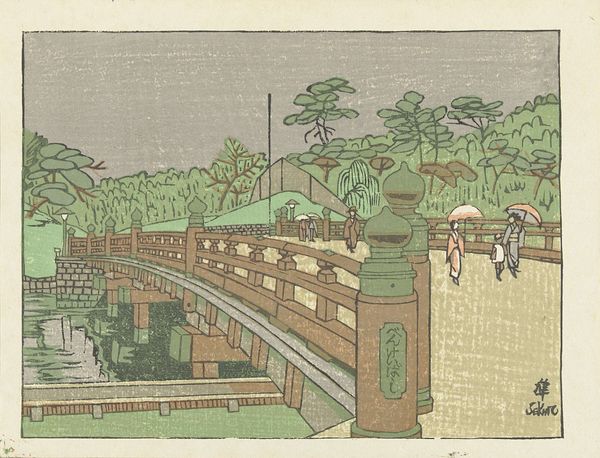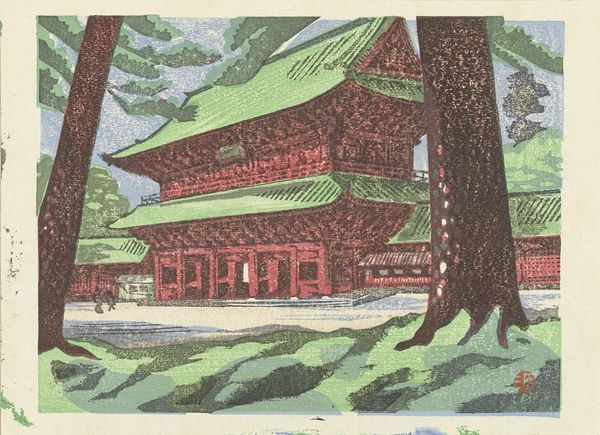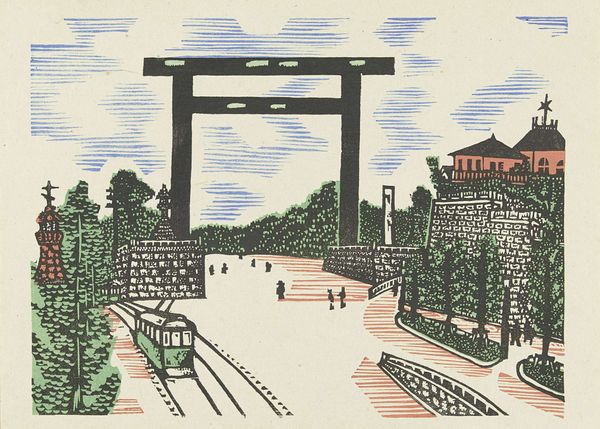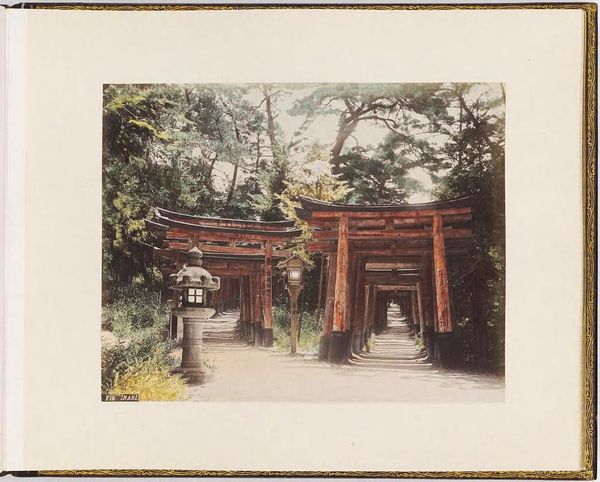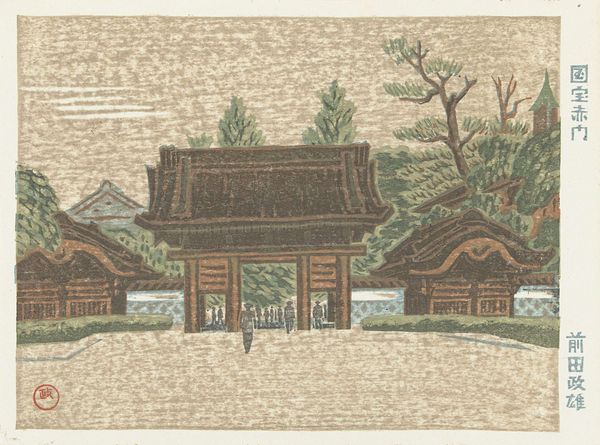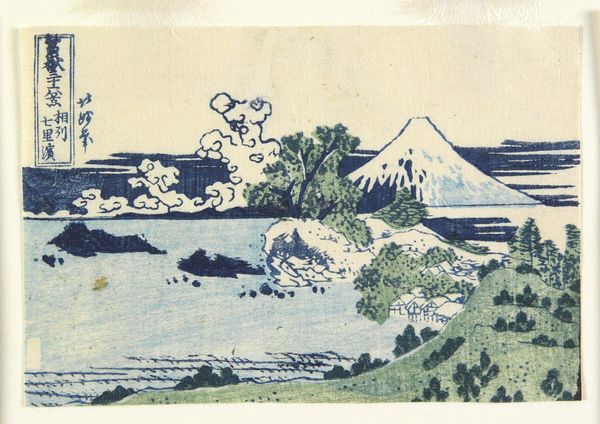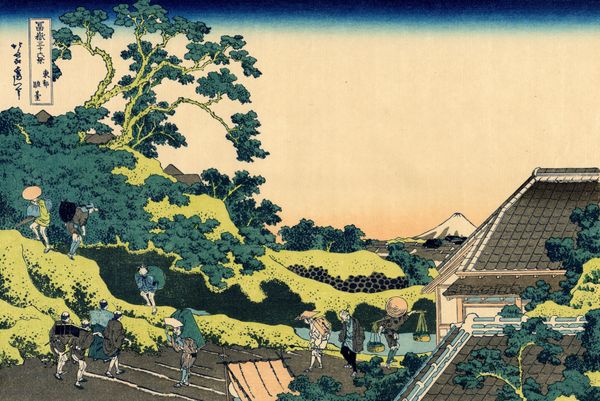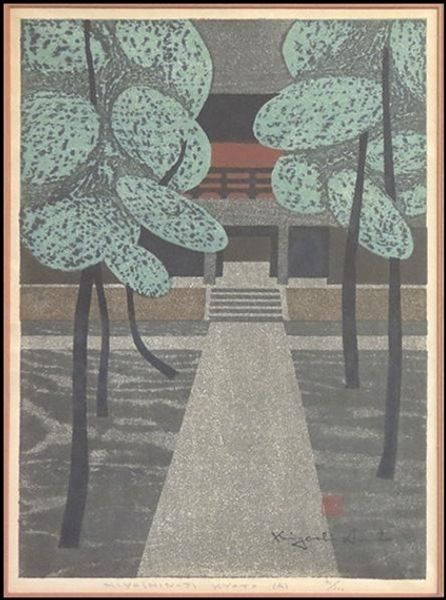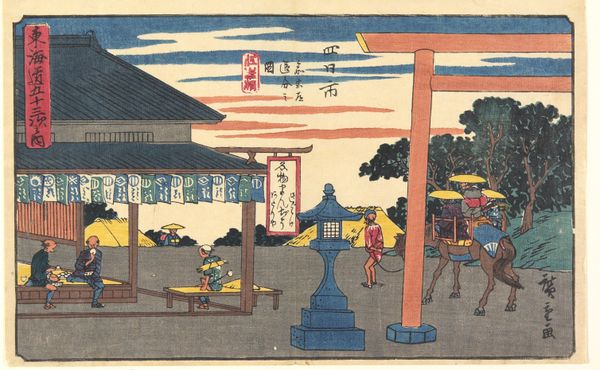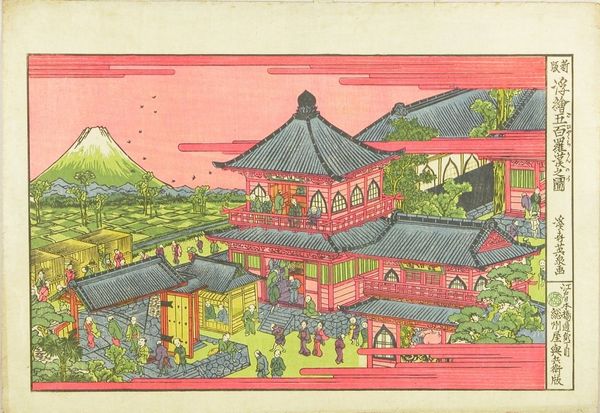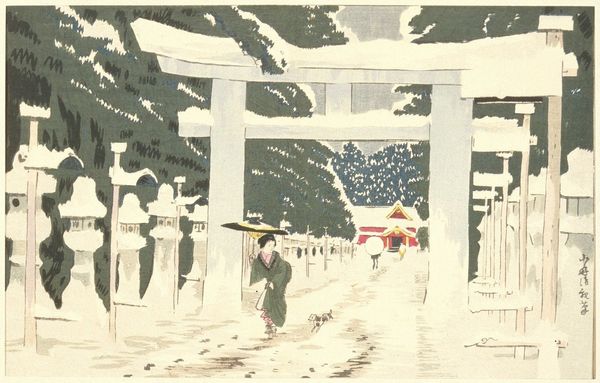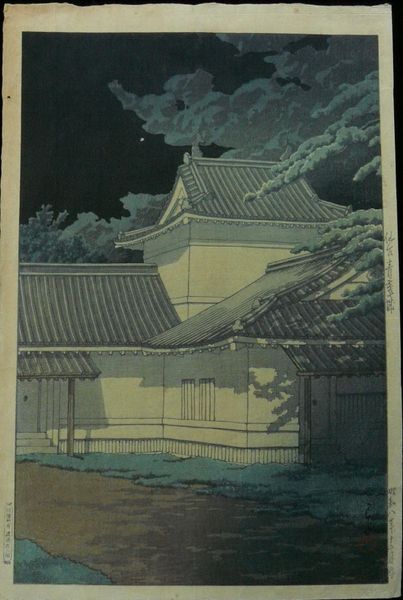
woodblock-print
#
blue ink drawing
#
landscape
#
woodblock-print
#
watercolour illustration
Dimensions: height 200 mm, width 277 mm, height 294 mm, width 357 mm
Copyright: Rijks Museum: Open Domain
Curator: I am immediately struck by the sense of serenity emanating from this print. Editor: That's quite right. What we're looking at is titled “Meiji Temple,” created around 1945 by Gen Yamaguchi. This woodblock print now resides here at the Rijksmuseum. Curator: Yes, and I find myself particularly drawn to how Yamaguchi captures the essence of the space through color and line. It's more than a depiction; it feels like a personal reflection. The palette—those gentle blues, greens, and yellows—conjure up a sort of nostalgic calmness. Editor: From a formalist perspective, the composition draws the viewer's eye directly through the Torii gate. The gate acts almost like a frame drawing us toward the architecture, in addition the lines of perspective used on the temple’s pavement invite us in while the wooden fences to the sides, rhythmically sectioned, hold us at bay. There's a deliberate push and pull at play. Curator: Absolutely. And isn't there something very human about this too? Notice the mother and child just beyond the Torii. It infuses a sense of the everyday—life amidst the spiritual. The texture from the woodblock printing adds to that lived-in, genuine quality. Editor: It does offer a rich ground that calls on one's sense of touch. It's tempting to suggest the symbolism of the gate signifies passage—moving into hallowed, elevated zones of existence. The family unit is a means to contrast this, to show those entering it and perhaps those barred from entering as well. It would depend on how familiar the viewing subject is with the symbolic language. Curator: It makes one contemplate what aspects of that hallowed space can also elevate the everyday moments. A lovely visual and intellectual encounter, wouldn't you agree? Editor: Yes. In the final analysis, the art presents a well constructed and compelling dialogue, an instance of historical and religious setting combined to reveal a moment of profound insight, of how symbolic constructions mediate experiences of transition, family, and the human encounter.
Comments
No comments
Be the first to comment and join the conversation on the ultimate creative platform.
